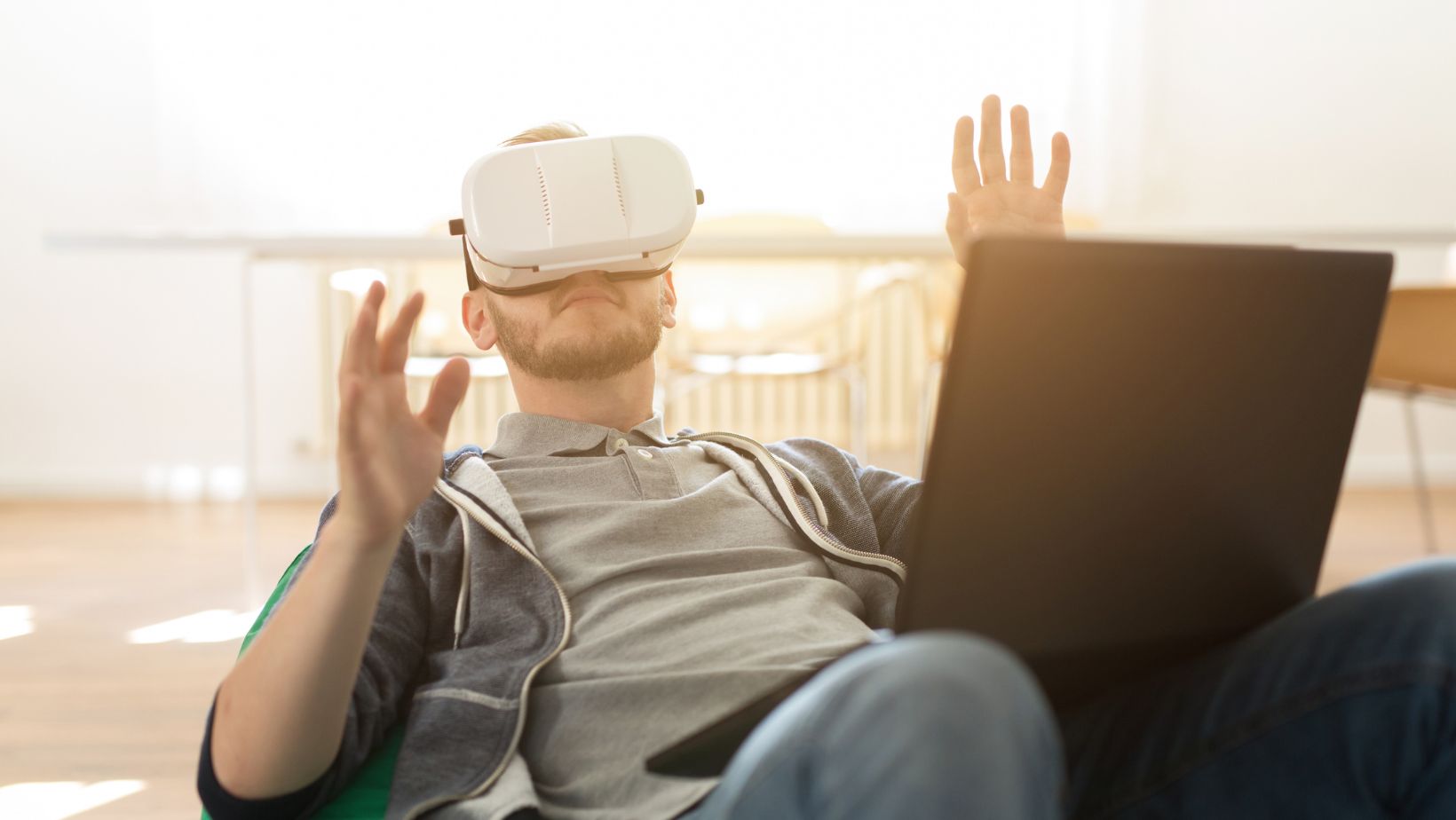Virtual experiences have become an integral part of our lives, reshaping how we learn, play, work, and socialize. From immersive gaming worlds to remote collaboration platforms, these simulated environments blur the lines between physical presence and digital immersion. In this comprehensive exploration, we delve into the evolution, significance, technologies, applications, challenges, and future of virtual experiences.
Introduction
In recent years, the term virtual experiences has transcended its niche origins in video gaming and specialized training, emerging as a transformative force across multiple sectors. By leveraging advancements in computing, graphics, and connectivity, virtual experiences now offer users the ability to inhabit entirely digital realms or augment the physical world with interactive overlays. Whether through virtual reality (VR) headsets, augmented reality (AR) glasses, or mixed-reality (MR) systems, people can engage more deeply with content, collaborate across distances, and explore environments that would otherwise be inaccessible.
This text will examine the roots of virtual experiences, their current applications, the underlying technologies that make them possible, the challenges they face, and the promising directions they are headed. We will consider how businesses, educators, healthcare professionals, and everyday consumers are harnessing these immersive environments to achieve goals that range from skill development to enhanced entertainment.
The Evolution of Virtual Experiences
Early Simulations and the Birth of VR
The concept of creating simulated environments can be traced back to the 1960s, when pioneers like Ivan Sutherland developed rudimentary head-mounted displays. These early systems, often referred to as “The Sword of Damocles,” provided simple wireframe graphics that responded to head movements. Though primitive by today’s standards, they laid the groundwork for virtual experiences by demonstrating that human perception could be fooled—or at least guided—into accepting computer-generated imagery as a spatial environment.
Rise of Consumer VR and AR
Fast forward to the 1990s and 2000s: consumer interest in virtual worlds took off with the proliferation of personal computers and gaming consoles. Products like the Virtual Boy and early VR arcades offered glimpses of immersive gameplay, albeit with limited graphics and high costs. As mobile processors grew more powerful and miniaturized sensors became affordable, smartphones became potent AR platforms. Games like “Pokémon GO” (2016) leveraged camera feeds and GPS data to create location-based augmented experiences, bringing AR into the mainstream.
Mixed Reality and Beyond
In the last decade, mixed reality experiences have emerged, combining elements of both VR and AR to allow users not only to overlay digital objects onto the real world but to interact with them spatially. Devices such as Microsoft’s HoloLens and Magic Leap’s headsets enable users to place virtual furniture in their living room or provide surgeons with real-time anatomical overlays during operations. These applications underscore a key trend: virtual experiences are no longer confined to entertainment—they serve practical, life-enhancing roles.
Core Technologies Behind Virtual Experiences
Head-Mounted Displays and Wearables
At the heart of immersive virtual experiences are head-mounted displays (HMDs). Modern VR headsets like the Oculus Quest 2 and Valve Index offer high-resolution screens, wide fields of view, and accurate head-tracking sensors. AR glasses, such as the Nreal Light and Vuzix Blade, project digital information directly onto transparent lenses, allowing users to maintain situational awareness of their surroundings.
Motion Tracking and Haptics
Accurate motion tracking—whether via dedicated cameras, infrared sensors, or inside-out tracking systems—enables the user’s movements to be mirrored in the virtual world. Haptic feedback devices, ranging from simple vibration motors to full-body suits, provide tactile sensations that increase the sense of presence. Gloves and exoskeletons can simulate resistance or texture, making interactions with virtual objects feel more realistic.
Graphics Rendering and Real-Time Engines
Real-time rendering engines like Unity and Unreal Engine power the visuals of most virtual experiences. These platforms handle lighting, shading, physics, and animation in real-time, ensuring a smooth and responsive environment. Ray tracing and advanced shading techniques continue to push graphical fidelity, making virtual scenes ever more photorealistic.
Networking and Cloud Computing
Multiplayer virtual experiences rely on low-latency networking to synchronize user actions across vast distances. Cloud computing infrastructures handle heavy computational loads—such as complex physics simulations or AI-driven NPC behaviors—allowing even relatively modest client hardware to access advanced virtual worlds. Edge computing further reduces latency by processing data closer to the user.
Applications of Virtual Experiences
Gaming and Entertainment
Gaming remains the most prominent consumer application of virtual experiences. Titles like “Beat Saber,” “Half-Life: Alyx,” and “VRChat” showcase how VR can create deeply engaging, interactive worlds. Theme parks and entertainment venues increasingly incorporate VR roller-coaster rides and 4D cinemas, merging physical motion with digital sensations for unforgettable attractions.
Education and Training
Virtual experiences offer risk-free environments for training in high-stakes fields. Pilots use flight simulators to practice emergency procedures; surgeons rehearse complex operations using virtual anatomy models; and firefighters navigate digital replicas of real-world buildings to rehearse rescue scenarios. In classrooms, AR apps enrich textbooks by animating historical events or molecular structures, catering to diverse learning styles.
Business Collaboration and Remote Work
As remote and hybrid work models proliferate, virtual meeting platforms like Spatial and Mozilla Hubs provide 3D collaboration spaces where participants can share documents, sketch on whiteboards, and conduct presentations as if co-located. Virtual conference spaces and expos have allowed organizations to host global events without the logistical burdens of travel, while digital twins of factories enable engineers to monitor and optimize operations remotely.
Healthcare and Therapy
Beyond surgical training, virtual environments support mental health therapies. Exposure therapy for phobias—whether fear of heights or public speaking—is conducted in controlled digital scenarios. Rehabilitation programs use VR to motivate patients with gamified exercises, tracking progress and providing real-time feedback. These virtual experiences can reduce anxiety, improve motor function, and enhance overall patient engagement.
Tourism and Cultural Heritage
Virtual tours democratize access to landmarks and museums, letting users explore the Louvre, the Pyramids of Giza, or coral reefs without leaving home. Cultural heritage institutes create digital archives that preserve endangered sites in high-resolution 3D scans. Virtual experiences allow both researchers and the public to navigate archaeological digs, manipulate artifacts, and engage with historical narratives interactively.
Benefits and Impact
Accessibility and Inclusion
Virtual experiences can reduce barriers for individuals with physical disabilities or geographic limitations. By offering wheelchair-friendly simulations or eliminating travel requirements, digital environments enable broader participation in events, education, and social interactions.
Cost and Resource Efficiency
Simulations can replace expensive, resource-intensive real-world setups—flight hours in a jet, for instance—with virtual training at a fraction of the cost. This resource efficiency also extends to environmental benefits when virtual conferences reduce carbon emissions from air travel.
Enhanced Engagement
Interactive and multisensory virtual experiences often lead to higher engagement and retention of information. Gamified learning modules and experiential marketing campaigns demonstrate that users involved in immersive environments tend to form stronger emotional connections and recall details more effectively.
Challenges and Limitations
Technical Constraints
Despite rapid improvements, hardware limitations persist. VR headsets can be bulky, and comfort issues such as motion sickness and eye strain affect some users. Battery life, weight, and ergonomic design remain areas for improvement as developers seek to make headsets lighter and more integrated into daily life.
Social and Ethical Considerations
Extended use of virtual experiences raises concerns about social isolation and psychological effects. Critics warn that excessive immersion could lead to detachment from physical reality or addictive behaviors. Additionally, the creation of hyper-realistic simulations invites ethical questions around deepfakes, privacy in mixed-reality social platforms, and consent when digitizing real environments or likenesses.
Infrastructure and Accessibility Gaps
High-quality virtual experiences demand robust internet connectivity and powerful hardware, which may not be available in all regions.
The Future of Virtual Experiences
Convergence of Technologies
The lines between VR, AR, and MR will continue to blur as hardware becomes more versatile and software platforms support mixed modalities. We can expect glasses that seamlessly switch between fully immersive and augmented modes, powered by AI-driven context awareness.
Spatial Computing and the Metaverse
Spatial computing—where digital content is anchored within the physical world—will underpin next-generation virtual experiences. As companies invest in metaverse platforms, persistent digital environments may become as commonplace as websites, with users owning virtual real estate, attending concerts, and socializing in spaces that exist across multiple devices.
AI and Procedural World-Building
Artificial intelligence will play a greater role in generating dynamic content, personalizing experiences in real-time based on user behavior. Procedurally generated worlds can expand infinitely, offering unique adventures and learning pathways for each participant. Virtual assistants embodied as intelligent NPCs may guide users through complex tasks or serve as companions in virtual spaces.
Integration with the Internet of Things (IoT)
Future virtual environments may integrate data from smart devices and sensors throughout the physical world. Imagine a virtual dashboard that visualizes real-time utility usage in your home, or an AR overlay that shows live analytics on industrial machinery as you walk through a factory floor.
Conclusion
From their origins in research laboratories to today’s sophisticated commercial platforms, virtual experiences have charted a remarkable course. They have enriched entertainment, enhanced professional training, democratized education, and opened new frontiers in healthcare and tourism. Yet, they also pose challenges—ethical, technical, and social—that must be addressed as these technologies become ever more pervasive.
Looking ahead, the fusion of VR, AR, MR, AI, and IoT promises virtual experiences of unprecedented richness and utility. By balancing innovation with responsible design and equitable access, we can ensure these digital realms serve as powerful catalysts for human connection, creativity, and progress.




